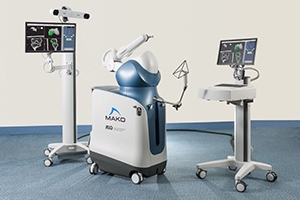A strained hip flexor is a common injury that can happen to anyone. It's an injury that occurs when hip muscles are overstretched or torn from high-impact sports, sudden movements or improper stretching techniques. While not usually serious, this injury can be painful if it’s not given the appropriate medical treatment.
Understanding what a hip flexor strain is, identifying its symptoms and knowing how long it will heal allows you to get the proper treatment and experience a faster recovery. Below, we’ll get into the causes and treatments of this orthopedic condition:
- What are hip flexors?
- What causes pain in hip flexors?
- Types of injuries to hip flexors
- Hip flexor strain symptoms
- How to treat hip flexor strain
- Road to recovery: How long does a strained hip flexor take to heal
What Are Hip Flexors?
Hip flexors are muscle tissues near the top of your thigh and pelvic region and are the key players in lower body movement. The iliopsoas is the flexor's primary muscle and comprises two muscle bellies: the Illiacacus and the Psoas major. Other muscles associated with hip flexor are the Rectus Femoris, Tensia Fascia Lata and Sartorius, all involved in properly moving your hip. Unfortunately, experiencing strains in any of these muscle tissues can cause pain.
What Causes Pain in Hip Flexors?
Many people who are active in sports and other athletic activities experience hip flexor pain. The pain is usually caused by a muscle strain in the hip or pelvis caused by overuse or injury. Therefore, this condition is common in football players and long-distance runners. However, you can also find hip misalignment symptoms due to flexor strains in sedentary individuals. For example, people who sit in the office all day often have tight hip flexors due to their lack of mobility. When muscles are seldom used, they shorten and tighten, causing lower back and hip pain.
Types of Injuries to Hip Flexors
When hip flexor strains are left untreated, they can develop into tears which are graded on a scale of one to three:
- Grade 1: Injuries involving a mild tear that causes slight pain and minimal loss of function
- Grade 2: Injuries involving a moderate that causes moderate pain and loss of function
- Grade 3: Injuries involving a total rupture of muscle fibers that causes intense pain and severe loss of function
Hip Flexor Strain Symptoms
Many people who experience hip flexor strains will also have the following symptoms:
- Sharp and sudden pain in the hip area
- Stiffness, weakness and cramping of muscles in the upper leg area
- Swelling around the injury
- Pain when lifting the leg
- Muscle spasms in the hip or thigh area
- Inability to jump, kick or sprint
- Discomfort when moving
- Reduced mobility
How To Treat Hip Flexor Strain
If you are experiencing discomfort from a hip flexor strain, it's best to be seen by an orthopedic specialist. For doctors to provide the best treatment, they will first conduct assessments to determine the severity of the injury and to rule out other conditions. After that, you may undergo tests, including an X-ray, CT scan, ultrasound and MRI scan.
There is no "one size fits all" treatment for a hip flexor strain because not all conditions are alike. Therefore, the treatment you'll receive will depend on your injury's severity. However, most orthopedic doctors recommend resting the hip muscles to relieve the pain and promote faster healing.
Road to Full Recovery: How Long Does a Strained Hip Flexor Take To Heal
The recovery time for a hip flexor strain will depend on the severity of the injury. It typically requires one to three weeks of rest and treatment to recover from mild conditions fully. On the other hand, more severe cases can take around four to six weeks or longer. In addition, injuries that did not receive immediate treatment may take months to recover fully and may also cause chronic pain.
To promote faster healing, doctors often use a combination of treatment methods which may include any of the following:
- Physical therapy: A physical therapist will provide the proper strengthening exercises, biomechanical correction and other treatment methods to help you avoid reinjury.
- Cold therapy: Your hip doctor will mostly recommend applying an ice pack to the hip flexor area for approximately 30 minutes every four hours to help reduce inflammation and minimize pain.
- Advanced exercises: Gentle movement allows the hip flexor muscles to regain their flexibility but never attempt to push through the workout if you experience discomfort.
- Medication: You may be prescribed medication to help with the pain and inflammation. However, talk to your doctor about any existing medication conditions.
Get A Fast Recovery With American Hip Institute
The American Hip Institute provides minimally-invasive treatment options for patients experiencing hip flexor strains and other hip conditions. We take pride in caring for each of our patients and use the best methods to provide the best outcomes and patient experience possible.
If you are experiencing a hip flexor strain or hip misalignment symptoms, the hip specialists at American Hip Institute will be happy to discuss your treatment options. Call (855) 964-5585 or schedule an appointment online.




